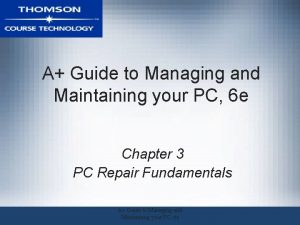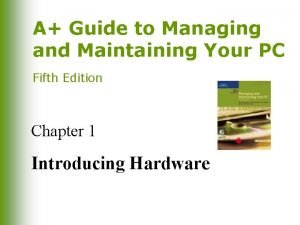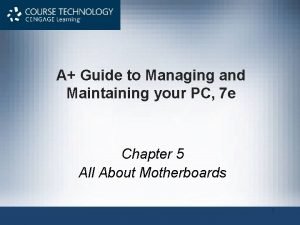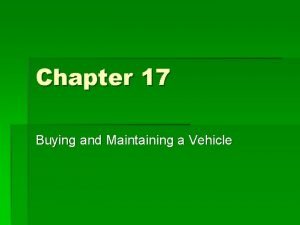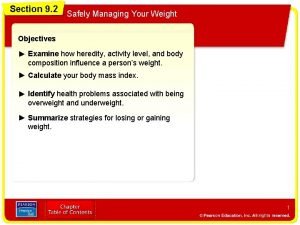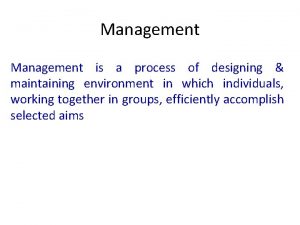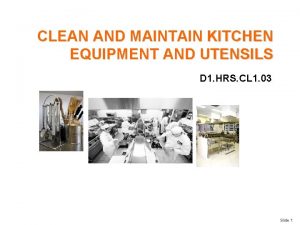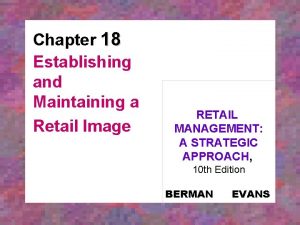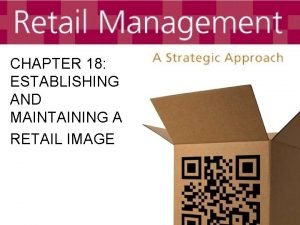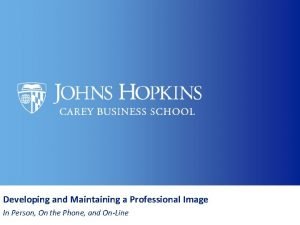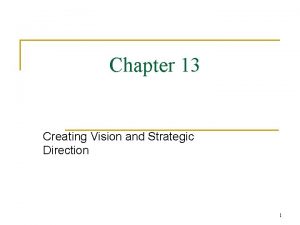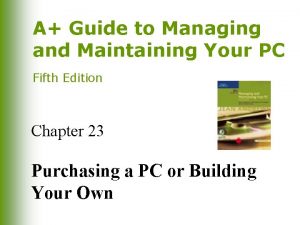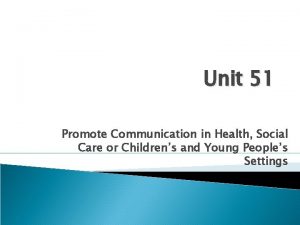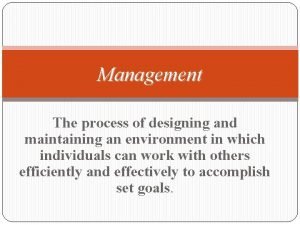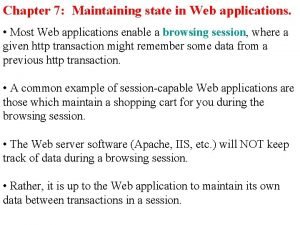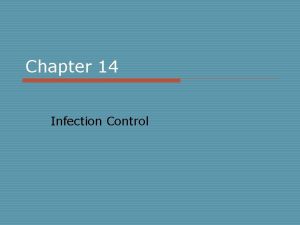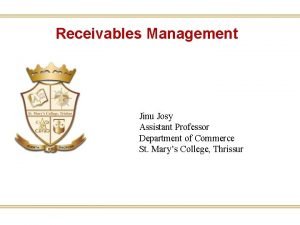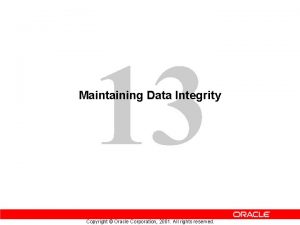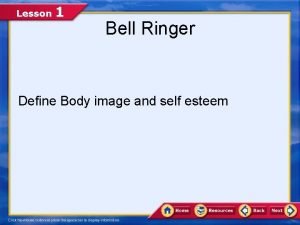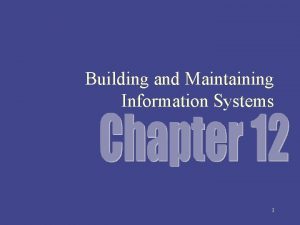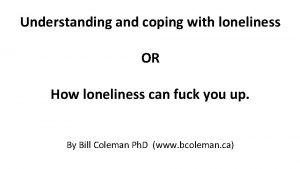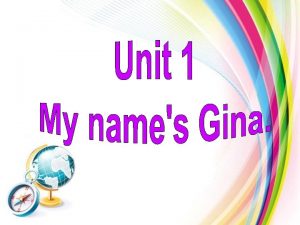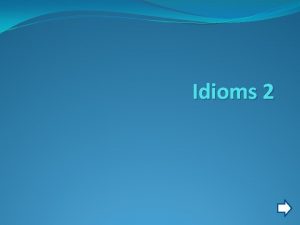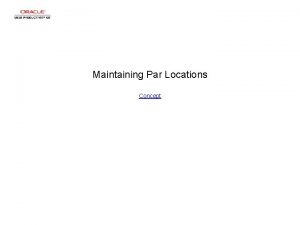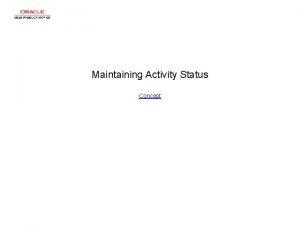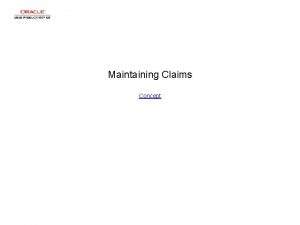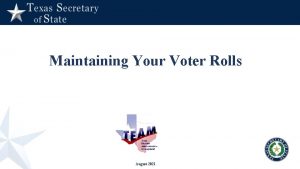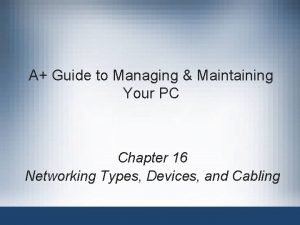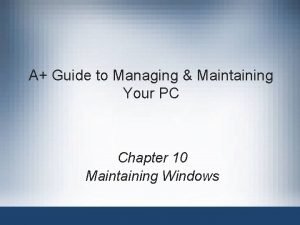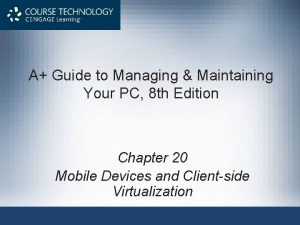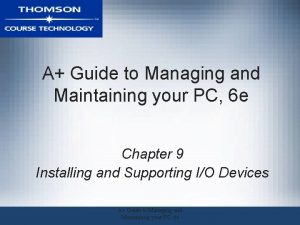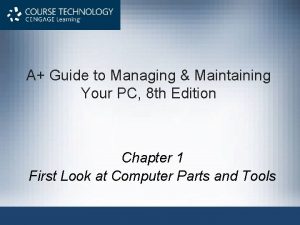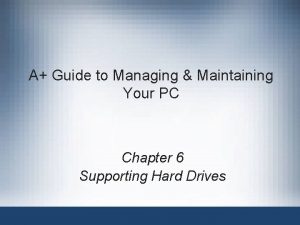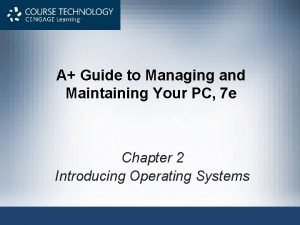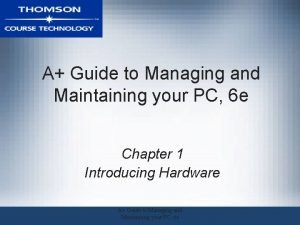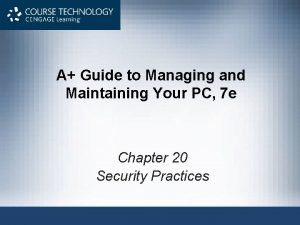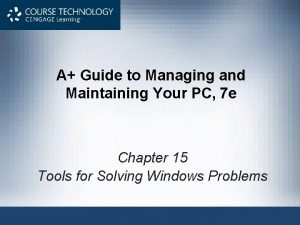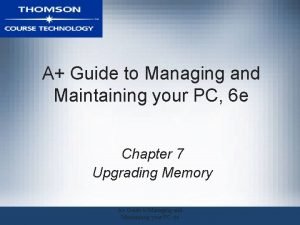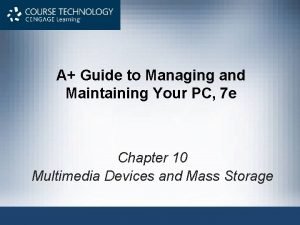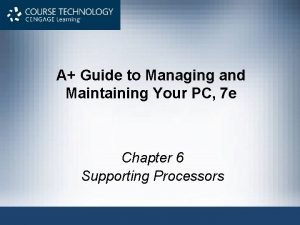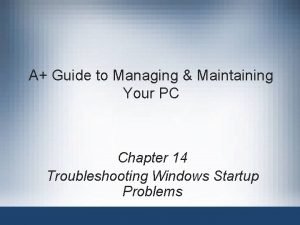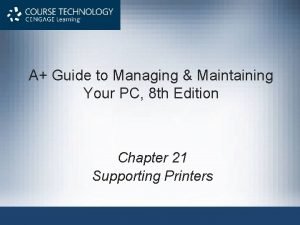A Guide to Managing Maintaining Your PC 8



















































- Slides: 51

A+ Guide to Managing & Maintaining Your PC, 8 th Edition Chapter 12 Troubleshooting Windows and Applications

Objectives • Learn about Windows tools to help you when troubleshooting Windows and application problems • Learn about general strategies and steps you can take to troubleshoot and solve any computer problem • Learn how to troubleshoot blue screen stop errors and improper shutdowns • Learn how to troubleshoot problems with applications A+ Guide to Managing & Maintaining Your PC, 8 th Edition © Cengage Learning 2014 2

Overview of Windows Troubleshooting Tools • Refer to Table 5 -1 on pages 212 -216 for a quick reference of the many troubleshooting tools offered in Windows A+ Guide to Managing & Maintaining Your PC, 8 th Edition © Cengage Learning 2014 3

Strategies To Troubleshoot Any Computer Problem • Should first approach the problem as an investigator – Be careful not to compound the problem through actions before discovering as much as you can about the problem • Ask questions until you understand the source of the problem • A systematic method used by most expert troubleshooters is introduced in this chapter – Refer to the diagram on the next slide and on page 217 of the text A+ Guide to Managing & Maintaining Your PC, 8 th Edition © Cengage Learning 2014 4

Figure 12 -1 General approach to problem solving A+ Guide to Managing & Maintaining Your PC, 8 th Edition © Cengage Learning 2014 5

Strategies To Troubleshoot Any Computer Problem • There are 13 rules introduced throughout the chapter that might be useful when troubleshooting • Here is Troubleshooting Rule #1: Approach the Problem Systematically – Start at the beginning and walk through it carefully – If you find more than one problem on the same computer, work on only one problem at a time • Trying to solve more than one at a time can get very confusing A+ Guide to Managing & Maintaining Your PC, 8 th Edition © Cengage Learning 2014 6

Step 1: Interview the User and Back Up Data • Some possible questions to ask: – Please describe the problem. What error messages, unusual displays, or failures did you see? – When did the problem start? – What was the situation when the problem occurred? – What programs or software were you using? – What changes have recently been made to the system? – Has there been a recent thunderstorm or electrical problem? A+ Guide to Managing & Maintaining Your PC, 8 th Edition © Cengage Learning 2014 7

Step 1: Interview the User and Back Up Data • Some possible questions to ask (cont’d): – Have you made any hardware, software, or configuration changes? – Has someone else used your computer recently? – Is there some valuable data on your system that is not backed up that I should know about before I start working on the problem? – Can you show me how to reproduce the problem? A+ Guide to Managing & Maintaining Your PC, 8 th Edition © Cengage Learning 2014 8

Step 1: Interview the User and Back Up Data • Troubleshooting Rule #2: Establish Your Priorities – Decide what your first priority is – When practical, ask user for help deciding priorities • Troubleshooting Rule #3: Beware of User Error – If you suspect this, ask user to show you the problem and watch what the user is doing • Troubleshooting Rule #4: Keep Your Cool and Don’t Rush – A wrong move can be costly – carefully plan your moves and research the problem A+ Guide to Managing & Maintaining Your PC, 8 th Edition © Cengage Learning 2014 9

Step 1: Interview the User and Back Up Data • Back up any important data that is not currently backed up before you begin working – If computer won’t boot to Windows desktop, use Windows Explorer to copy files to a flash drive – If Windows Explorer can’t be used • Remove the hard drive and connect to a USB port on another computer • Copy the data to the other computer A+ Guide to Managing & Maintaining Your PC, 8 th Edition © Cengage Learning 2014 10

Step 2: Examine The System and Make Your Best Guess • Troubleshooting Rule #5: Make No Assumptions – Hardest rule to follow – Do your own investigating after the user tells you about the problem • Troubleshooting Rule #6: Try the Simple Things First – Most problem are easy to fix – Check simple things first – Example: if USB drive is not working, verify the drive works on another computer before verifying drivers A+ Guide to Managing & Maintaining Your PC, 8 th Edition © Cengage Learning 2014 11

Step 2: Examine The System and Make Your Best Guess • Follow this process to form best theory and test: – Reproduce the problem and observe for yourself what the user described – Decide if the problem is hardware or software related – Make your best guess as to the source of the problem • Example: if video does not work, a best guess is the monitor cables are loose or the monitor is turned off • Troubleshooting Rule #7: Become a Researcher – Search the web, ask questions, read documentation, make phone calls A+ Guide to Managing & Maintaining Your PC, 8 th Edition © Cengage Learning 2014 12

Figure 12 -2 Search the manufacturer web sites for help with a hardware or software product A+ Guide to Managing & Maintaining Your PC, 8 th Edition © Cengage Learning 2014 13

Step 3: Test Your Theory • Example of a test: – Video does not work and you suspect loose cables – Check the connection and discover that it is loose – Connect it securely and problem is solved • Example that includes testing an incorrect guess: – – – CD drive won’t read a CD, suspect a scratched CD CD looks fine, no scratch Next guess, CD drive is not recognized by Windows Check Device Manager and it reports errors Next guess, drivers are corrupted A+ Guide to Managing & Maintaining Your PC, 8 th Edition © Cengage Learning 2014 14

Step 3: Test Your Theory • Troubleshooting Rule #8: Divide and Conquer – Isolate the problem – Remove one hardware or software component after another until the problem is isolated – Try the following: • In Windows, stop all nonessential services running in the background • Boot from a bootable CD or DVD to eliminate OS on the hard drive • Start Windows in Safe Mode to eliminate unnecessary startup programs A+ Guide to Managing & Maintaining Your PC, 8 th Edition © Cengage Learning 2014 15

Step 3: Test Your Theory • Troubleshooting Rule #9: Write Things Down – Take notes, draw diagrams, make lists • Troubleshooting Rule #10: Don’t Assume the Worst – When working with a hard drive that is not working, don’t assume that data is lost • Troubleshooting Rule #11: Reboot and Start Over – Take a break, walk away from the problem – Come back and begin again A+ Guide to Managing & Maintaining Your PC, 8 th Edition © Cengage Learning 2014 16

Step 4: Plan Your Solution and Then Fix the Problem • Troubleshooting Rule #12: Use the Least Invasive Solution First – Fix the problem so that they system returns to normal working condition with the least amount of effort • Troubleshooting Rule #13: Know Your Starting Point – Find out what works and doesn’t work before you take anything apart A+ Guide to Managing & Maintaining Your PC, 8 th Edition © Cengage Learning 2014 17

Step 4: Plan Your Solution and Then Fix the Problem • Plan your solution and fix the problem: – Consider different solutions and select the least invasive one – Before applying your solution, determine what works and what doesn’t work – Fix the problem A+ Guide to Managing & Maintaining Your PC, 8 th Edition © Cengage Learning 2014 18

Step 5: Verify the Fix and Take Preventative Action • After problem is fixed: – Reboot the system and verify all is well – Have the user check everything and verify also – Ask yourself this question: Could this problem have been prevented? • If so, instruct the user on what to do, set Widows to automatically install updates, etc… A+ Guide to Managing & Maintaining Your PC, 8 th Edition © Cengage Learning 2014 19

Step 6: Document What Happened • Reasons to document: – – Help when troubleshooting the next situation Train others Develop effective preventative maintenance plans Satisfy any audits or employer queries about your work • Many companies use Help Desk Software to record this information A+ Guide to Managing & Maintaining Your PC, 8 th Edition © Cengage Learning 2014 20

Figure 12 -5 Help Desk Software allows you to create, edit, and close tickets used by technicians A+ Guide to Managing & Maintaining Your PC, 8 th Edition © Cengage Learning 2014 21

Troubleshooting Blue Screen Errors and Improper Shutdowns • Blue screen error: happens when processes running in kernel mode encounter a problem and Windows must stop – Also known as a stop error or blue screen of death (BSOD) • A stop error at the top and the specific number of the error at the bottom will help with troubleshooting A+ Guide to Managing & Maintaining Your PC, 8 th Edition © Cengage Learning 2014 22

Figure 12 -6 A blue screen of death (BSOD) is definitively not a good sign A+ Guide to Managing & Maintaining Your PC, 8 th Edition © Cengage Learning 2014 23

Troubleshooting Blue Screen Errors and Improper Shutdowns • How to deal with blue screen errors after startup: – Search the Microsoft web site – If a device driver or service that caused the problem is listed, use Windows Explorer to locate the program file • You can try to reinstall the device or program – After a restart, a Windows error message box might appear with useful information – Check Event Viewer – Check Archived Messages in the Action Center • In Vista, check Problem Reports and Solutions window A+ Guide to Managing & Maintaining Your PC, 8 th Edition © Cengage Learning 2014 24

Troubleshooting Blue Screen Errors and Improper Shutdowns • How to deal with blue screen errors after startup (cont’d): – Use Windows Updates to apply patches – Undo any recent changes • If unsure which changes to undo, consider using System Restore – Use Memory Diagnostics tool to check memory – Use Chkdsk /r to check the hard drive for errors A+ Guide to Managing & Maintaining Your PC, 8 th Edition © Cengage Learning 2014 25

Troubleshooting Blue Screen Errors and Improper Shutdowns • Common blue screen errors: – BAD_POOL_HEADER – could occur for a variety of reasons such as a corrupted Windows update, bad memory, or a corrupted application – NTFS_FILE_SYSTEM – hard drive might be corrupted – KERNEL_DATA_INPAGE_ERROR – could not read the paging file – UNEXPECTED_KERNEL_MODE_TRAP – most likely caused by bad memory – DIVIDE_BY_ZERO_ERROR – most likely caused by an application A+ Guide to Managing & Maintaining Your PC, 8 th Edition © Cengage Learning 2014 26

Windows 32 -Bit and 64 -Bit Patches • Must get a 32 -bit patch for a 32 -bit installation of Windows, a device driver, or an application • For a 64 -bit installation of Windows: – Must get a 64 -bit device driver – An application could be a 32 -bit or 64 -bit application • Guidelines when reading error messages: – The term x 86 refers to 32 -bit CPUs and operating systems – All CPUs in PCs today are hybrid processors • The term x 86 -64 refers to these processors and also may refer to a 64 -bit OS A+ Guide to Managing & Maintaining Your PC, 8 th Edition © Cengage Learning 2014 27

Windows 32 -Bit and 64 -Bit Patches • Guidelines when reading error messages (cont’d): – The term IA 64 refers to 64 -bit Intel processors – The term x 64 refers to 64 -bit operating systems A+ Guide to Managing & Maintaining Your PC, 8 th Edition © Cengage Learning 2014 28

Memory Diagnostics • Identifies problem with memory • Eliminates memory as problem source • Use one of these methods to start the utility – Command Prompt window command: mdsched. exe – If Windows desktop will not load, press Spacebar during the boot • Select Windows Memory Diagnostic from the Windows Boot Manager screen – If you cannot boot from the hard drive, boot from the Windows setup DVD • Click Repair your computer then click Windows Memory Diagnostic A+ Guide to Managing & Maintaining Your PC, 8 th Edition © Cengage Learning 2014 29

Figure 12 -9 Force the Windows Boot Manager menu to display by pressing the Spacebar during the boot A+ Guide to Managing & Maintaining Your PC, 8 th Edition © Cengage Learning 2014 30

Figure 12 -10 Opening menu when you boot from the Windows 7 setup DVD A+ Guide to Managing & Maintaining Your PC, 8 th Edition © Cengage Learning 2014 31

System File Checker • System file checker (SFC) – SFC protects system files and keeps cache current • Can refresh a damaged file – Run SFC in elevated command prompt window: sfc /scannow • If corrupted system files are found, might need the Windows setup DVD to restore files – If SFC won’t run using the above command, try the command sfc /scanonce • Will scan files immediately after the next reboot A+ Guide to Managing & Maintaining Your PC, 8 th Edition © Cengage Learning 2014 32

Dealing with Improper Shutdowns • Hardware that can cause these errors: – Memory, motherboard, CPU, video card, or the system overheating • When these error occur: – – Check Event Viewer – look for hardware failure Apply any Windows patches Use Memory Diagnostics and Chkdsk /r If overheating is suspected, go into BIOS setup and check the temperature of the CPU • Should not exceed 38 degrees C A+ Guide to Managing & Maintaining Your PC, 8 th Edition © Cengage Learning 2014 33

Dealing With Endless Shutdowns and Restarts • If caught in an endless cycle of restarts: – Boot into Safe Mode where you can change the Windows setting to control automatic restarts Figure 12 -15 Use the Startup and Recovery box to change the way Windows responds to a stop error A+ Guide to Managing & Maintaining Your PC, 8 th Edition © Cengage Learning 2014 34

Troubleshooting Applications • Problems with an application might be caused by: – – – The application Hardware The operating system Data Other applications in conflict with the application User A+ Guide to Managing & Maintaining Your PC, 8 th Edition © Cengage Learning 2014 35

General Steps For Solving Application Errors • Step 1: Interview the User and Back Up Data – Ask the user to reproduce the problem while you watch – Try a reboot • Step 2: Error Messages, The Web, and Logs Might Help – Check Windows 7 Action Center – Check Vista Problem Reports and Solutions window – For XP error dialog boxes, click Send Error Report and follow links to find out more information A+ Guide to Managing & Maintaining Your PC, 8 th Edition © Cengage Learning 2014 36

Figure 12 -16 Windows 7 reports problems with two applications A+ Guide to Managing & Maintaining Your PC, 8 th Edition © Cengage Learning 2014 37

General Steps For Solving Application Errors • Step 2: Error Messages, The Web, and Logs Might Help (cont’d): – Search the web for help – Use Event Viewer and Reliability Monitor to look for clues • Step 3: Consider the Data or the Application is Corrupted – Application settings might be wrong – Uninstall and reinstall the application A+ Guide to Managing & Maintaining Your PC, 8 th Edition © Cengage Learning 2014 38

General Steps For Solving Application Errors • Step 4: Consider Outside Interference – – – – Suspect a virus System resources might be low Another application might be interfering A service may have failed to start Bad memory Corrupted hard drive A background program might be conflicting with the application A+ Guide to Managing & Maintaining Your PC, 8 th Edition © Cengage Learning 2014 39

General Steps For Solving Application Errors • Step 5: Consider Windows Might Be the Problem – A problem with an application might be solved by updating or restoring Windows system files – Download Windows updates – Use System File Checker to verify and replace system files – Use System Restore A+ Guide to Managing & Maintaining Your PC, 8 th Edition © Cengage Learning 2014 40

Responding To Specific Error Messages • When An Application Hangs: – Use Task Manager to end it – If Task Manager can’t end it, use the Tasklist and Taskkill commands • Tasklist command returns the process identify (PID) • Taskkill command uses the process ID to kill the process – Example: • use taskkill | more to list running processes • Note the PID of the process you want to end (ex. 2212) • Enter taskkill /f /pid: 2212 to forcefully kill the process A+ Guide to Managing & Maintaining Your PC, 8 th Edition © Cengage Learning 2014 41

Responding To Specific Error Messages • When a File Fails to Open – The application is not installed or the file extension is wrong – A program associated with a file extension is called a default program – Use the Default Programs window to change the program associated with a file extension • Data Sources Open Database Connectivity (ODBC) tool: can be used to allow data files to be connected to applications they normally would not use A+ Guide to Managing & Maintaining Your PC, 8 th Edition © Cengage Learning 2014 42

Figure 12 -21 Select the default program to associate with a file extension A+ Guide to Managing & Maintaining Your PC, 8 th Edition © Cengage Learning 2014 43

Responding To Specific Error Messages • When a Service Fails to Start – Can be caused by a corrupted or missing service program – Check the Service console to make sure the service is set to start automatically – Use the service’s Properties box to find the path and filename to the executable program • Next, use Windows Explorer to make sure the program file is not missing A+ Guide to Managing & Maintaining Your PC, 8 th Edition © Cengage Learning 2014 44

Responding To Specific Error Messages • When A DLL Is Missing or a Component Is Not Registered – Most applications have many small programs called components that serve the main program – These small component services often have a. DLL extension (Dynamic Link Library) – When an error message appear about a missing DLL • Reinstall the application • Recover it from backup or from the application installation files A+ Guide to Managing & Maintaining Your PC, 8 th Edition © Cengage Learning 2014 45

Responding To Specific Error Messages • When A DLL Is Missing or a Component Is Not Registered (cont’d) – The relationship between the main program and the component might be broken • Use a Microsoft Management Console snap-in called Component Services (COM+) to register components • On older versions of Windows use the Regsvr 32. exe program to register the component A+ Guide to Managing & Maintaining Your PC, 8 th Edition © Cengage Learning 2014 46

Figure 12 -26 Use the Component Services window to register components used by an application A+ Guide to Managing & Maintaining Your PC, 8 th Edition © Cengage Learning 2014 47

Responding To Specific Error Messages • When the Application Has Never Worked – Update Windows and search the web – Run the installation program or application as an administrator – Consider whether an older application is having compatibility problems with Windows – Verify that the application is digitally signed A+ Guide to Managing & Maintaining Your PC, 8 th Edition © Cengage Learning 2014 48

Figure 12 -30 This program is digitally signed A+ Guide to Managing & Maintaining Your PC, 8 th Edition © Cengage Learning 2014 49

Summary • There are many Windows tools that can be used to help find a solution to a problem with a system • Many technicians use a six step troubleshooting process to help them solve PC related problems • To solve blue screen stop errors, use the web, Event Viewer, Windows updates, System Restore, Memory Diagnostics, and Chkdsk to examine the system and solve the problem • Microsoft calls 32 -bit OSs x 86 -based OSs and x 64 applies to 64 -bit OSs A+ Guide to Managing & Maintaining Your PC, 8 th Edition © Cengage Learning 2014 50

Summary • Use the System File Checker (SFC) tool to verify and restore system files • Windows error messages and logs can help examine a system looking for the source of an application problem • Applying Windows patches and repairing system files can sometimes solve an application problem A+ Guide to Managing & Maintaining Your PC, 8 th Edition © Cengage Learning 2014 51
 Guide to managing and maintaining your pc
Guide to managing and maintaining your pc Guide to managing and maintaining your pc
Guide to managing and maintaining your pc Guide to managing and maintaining your pc
Guide to managing and maintaining your pc Managing your own business
Managing your own business How to keep your deliverance
How to keep your deliverance Drivers ed chapter 17
Drivers ed chapter 17 Give us your hungry your tired your poor
Give us your hungry your tired your poor Managing your personal finances textbook answers
Managing your personal finances textbook answers Chapter 16 managing the stress in your life
Chapter 16 managing the stress in your life Managing your online identity
Managing your online identity Managing your payables
Managing your payables Managing your weight part 2
Managing your weight part 2 Types of records and reports in nursing
Types of records and reports in nursing The process of designing and maintaining an environment
The process of designing and maintaining an environment Building and maintaining a website
Building and maintaining a website 7 cleaning and maintaining kitchen premises
7 cleaning and maintaining kitchen premises Establishing and maintaining a retail image
Establishing and maintaining a retail image Components of a retail image
Components of a retail image Maintaining a healthy body composition and body image
Maintaining a healthy body composition and body image Maintaining a professional image
Maintaining a professional image Class maintaining suffixes
Class maintaining suffixes Chapter 15 infection control
Chapter 15 infection control Creating vision and strategic direction
Creating vision and strategic direction Chapter 11 managing weight and eating behaviors
Chapter 11 managing weight and eating behaviors Purchasing and maintaining a computer
Purchasing and maintaining a computer Potential tension between maintaining confidentiality
Potential tension between maintaining confidentiality Characteristics of a teachable spirit
Characteristics of a teachable spirit Maintaining a website
Maintaining a website Access module 3 maintaining a database
Access module 3 maintaining a database The process of designing and maintaining an environment
The process of designing and maintaining an environment Kohlberg's stages of moral development
Kohlberg's stages of moral development Maintaining effective partnerships
Maintaining effective partnerships Maintaining state in web applications
Maintaining state in web applications Maintaining transmission based isolation precautions
Maintaining transmission based isolation precautions Ways to maintain ecological balance
Ways to maintain ecological balance Cost of maintaing receivable
Cost of maintaing receivable The maintaining of an internal balance
The maintaining of an internal balance Maintaining a healthy body composition and body image
Maintaining a healthy body composition and body image Maintaining student privacy
Maintaining student privacy Building and maintaining customer relationships
Building and maintaining customer relationships The way you see your body
The way you see your body Data integrity in oracle
Data integrity in oracle Maintaining curiosity
Maintaining curiosity Maintaining a healthy body composition and body image
Maintaining a healthy body composition and body image Maintaining information systems
Maintaining information systems Coping with gay loneliness
Coping with gay loneliness Stop blaming your parents for your problems
Stop blaming your parents for your problems What side is your heart on
What side is your heart on Theres too many kids in this tub
Theres too many kids in this tub How to introduce yourself to classmates
How to introduce yourself to classmates Cara ikatan buku sila
Cara ikatan buku sila In your notebook write about where you live what is it like
In your notebook write about where you live what is it like
